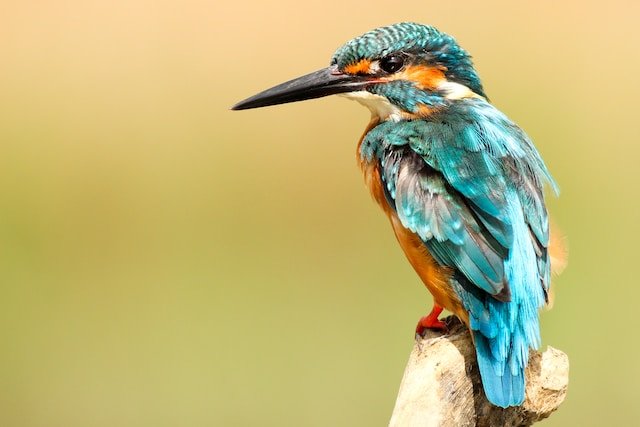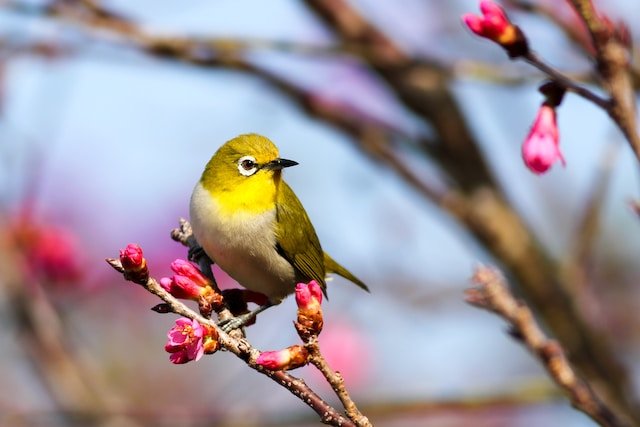Is A Bird A Primary Consumer
In the intricate web of ecosystems, knowing the functions of the various organisms is vital in determining the intricate balance that is essential to existence on Earth. The core of this complexity is the trophic levels, which each play an individual role in the overall scale of things.
Within them, the primary consumer enjoys an important role as the bridge with primary producers (plants) in addition to the secondary consumer (predators). While insects and mammals often appear in the first place as main consumers, bird herbivores are an intriguing yet often unnoticed part of this niche.
This article explores the world of avian herbivores, examining their role as the major consumers in diverse ecosystems. Through the study of food habits, roles, and contributions of birds that eat herbivores and their role in the ecosystem, we hope to reveal the intricate connections that shape the natural world.
From forests to prairies, the feathered eaters have a crucial role to play in conserving biodiversity and ensuring the health of ecosystems. When we look through the case study and explore the issues faced by herbivore birds, we can see that their protection isn’t only an ornithological significance but is a greater dedication to the protection of the complex network of living things that supports all of us.
Characteristics Of Primary Consumers

Primary consumers play an essential part in ecosystems. They serve as a link between consumers (plants) and the higher levels of trophic. Knowing the characteristics of primary consumers is crucial to understand their ecological importance. Here are the key traits:
1. Trophic Level
- Primary consumers are the second trophic level of food webs.
- These producers directly utilize the energy (plants) to produce energy.
2. Dietary Habits
- Mostly herbivores. However, some species are omnivores and insectivores.
- Autotrophs are dependent on (plants) as their principal food source.
3. Energy Transfer
- Convert biomass energy from plants efficiently into a sustainable form.
- Transfer energy into higher levels of trophic level by predation.
4. Population Dynamics
- The size of the population is often controlled through competition, predation, as environmental factors.
- Variations in the primary population of consumers could affect whole ecosystems.
5. Adaptations for Herbivory
- Specialized digestive systems are designed to degrade the plant cellulose.
- Morphological adaptations, such as teeth that are specialized to chew or graze.
6. Role in Nutrient Cycling
- Through excretion and consumption Primarily consumed consumers play a role in the cycle of nutrients.
- Their waste is a source of nutrients for the soil, which benefits the growth of plants.
7. Biotic Interactions
- Connected to both producers and predators.
- Influence on plant populations via herbivores and shaping the community structure.
8. Response to Environmental Changes
- At the risk of changing climate, habitat, and the access to food and water resources.
- Indicate species used to evaluate the health of ecosystems.
Is A Bird A Primary Consumer
Yes some birds serve as primary consumer. Primarily, consumers are those who eat producers. These are the organisms that create their own food by photosynthesis or chemical synthesis. Examples of producers are algae, plants, and a few bacteria.
A lot of birds consume seeds as well as fruits and other plant foods, and so they are thought to be primary consumers. Hummingbirds, for instance, consume nectar from flowers, whereas finches consume the seeds as well as berries. Certain birds, like chickens and sparrows, are omnivores and consume both animals and plants. However they consume a substantial amount of plant matter.
Here are a few examples of birds that are primary consumers:
- Hummingbirds
- Finches
- Sparrows
- Chickens
- Doves
- Pigeons
- Pheasants
- Quail
There are many birds that are primary consumers. Certain birds, like the hawks, eagles, or Owls, are secondary consumers. This means they consume primary consumers. Others, like crows and vultures, are scavengers. This means that they consume dead animals.
Case Studies
Case studies can provide useful insights into the particular functions and effects of consumers who are primary across diverse ecosystems. Here are a few examples:
1. The African Savanna: Elephants as Mega Herbivores
- In the African Savanna, the elephants (Loxodonta africana) are the primary food source, having an enormous impact on the vegetation.
- Their herbivores alter the landscape, creating clearings and also influencing the composition of plants.
- Elephants’ presence enhances the biodiversity of the area by providing habitats for herbivores, as well as smaller animals.
2. Amazon Rainforest: Insectivorous Birds
- Within the Amazon rainforest, insectivorous birds such as tanagers and toucans serve as the primary food source.
- They play an important part in controlling the population of insects and avoiding outbreaks that could harm plants.
- Their behavior of foraging influences the spread and the abundance of insects, which affects the whole ecosystem.
3. North American Prairie: Bison as Grazers
- In the past, bison (Bison bison) were the primary food source in the North American prairies.
- Their grazing patterns influenced the shape of grasslands and facilitated the diversification of plant species.
- Bison also played a role in the cycling of nutrients in their dung, increasing soil fertility.
4. Coral Reefs: Herbivorous Fish
- Parrotfish and surgeonfish found in coral reefs serve as principal consumers, feeding mainly on algae.
- Their herbivores prevent the overgrowth of algal species, which helps preserve the health of coral reefs.
- The abundance and diversity of these fish could affect the resilience of coral reefs and the dynamics of ecosystems.
5. Arctic Tundra: Lemmings as Herbivores
- Lemmings, rodents of small size, are the main food source of the Arctic tundra.
- Their grazing affects plant communities and affects everything else in the food chain, including predators such as Arctic snowy owls and foxes.
- The fluctuations in the lemming population affect the whole Arctic ecosystem.
Ecological Significance Of Birds As Primary Consumers

The importance of birds’ ecological value in their primary consumption is numerous includes their impact in the plant population, contribution to nutrient cycling and interactions with other levels of trophic within the ecosystem. Here are the most important aspects of their ecological significance:
1. Seed Dispersal
- A variety of bird species eat seeds and fruits, contributing to the spreading of seeds from plants.
- This helps in the expansion of new areas, increases genetic diversity, and affects the distribution of plant species.
2. Pollination
- Certain species of birds, specifically nectar-feeding birds, such as hummingbirds, are essential to pollination.
- Through the transfer of pollen between flowers, they help in the reproducibility of flowers, thereby contributing to the preservation of biodiversity in plants.
3. Herbivory and Plant Growth
- Herbivorous birds are a great way to control populations of insects that could endanger plants.
- Their feeding habits influence their structure and growth, influencing the structure of plant communities.
4. Nutrient Cycling
- Guano, also known as bird droppings, contains nutrients that add to the soil’s fertility.
- Through defecation, birds participate in the cycle of nutrients, which increases the supply of the essential elements needed to support plant growth.
5. Biological Pest Control
- Insectivorous birds are a major factor in the prevention of pests caused by insects.
- Through preying on insects, they assist in controlling the population of insects by preventing outbreaks that can harm the plant’s health.
6. Ecosystem Resilience
- The diversity of bird species helps to increase ecosystems’ resilience.
- Biodiversity among primary consumers assures that the various niches in ecology are filled, which promotes stability and adaptability to environment’s changes.
Conclusion
In the end, the role of bird species as consumers is crucial in shaping the dynamic of ecosystems across the globe. Their numerous contributions, ranging from pollination and seed dispersal to herbivores and nutrient cycling and the complex system of interaction that supports biodiversity. Birds do not just affect the plant population but can also be a metric of ecosystem health, which reflects the delicate balance that exists within these complicated ecosystems.
Suppose we understand the importance of birds’ ecology as principal consumers. In that case, we can see that their protection is not only vital for avian biodiversity but also crucial to the strength and stability of ecosystems as a whole. Thus, encouraging greater awareness of these functions and encouraging conservation efforts is essential to ensure the health and function of our varied natural ecosystems in which birds play a crucial role in ensuring the delicate balance of life.


















